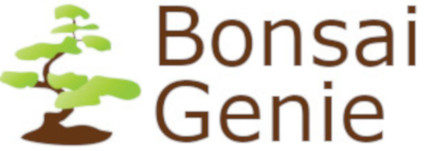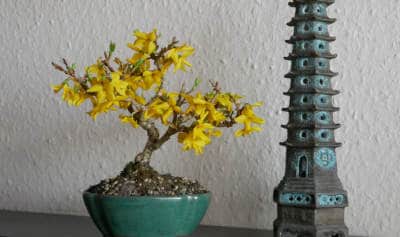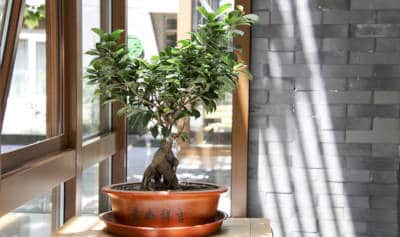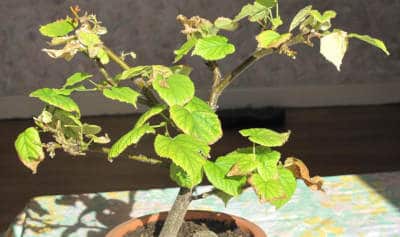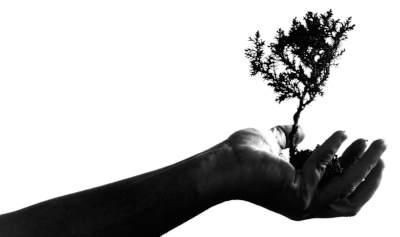How to Get Started with Bonsai

I got interested bonsai because one of my Dad’s main hobbies was growing bonsai trees. He had a long table in the garden for displaying his trees and to provide a workspace.
When he passed away the trees were left behind and that was when I started to become interested. I’m sorry now that I didn’t pay more attention when he was alive now that I’m trying to get started with bonsai.
Getting started with bonsai. There are a number of reasons why you might want to become involved with bonsai. There are also a number of ways you can get started. These include buying an established bonsai tree, using a starter kit, and growing from seeds or cuttings. There are also some tools you might need and bonsai pots you could choose from.
There are a number of options for getting started with bonsai, and the way in that you choose will probably depend on how involved you want to get.
Why Would You Want to Start Doing Bonsai?
I suppose the first question to ask is why you would want to start growing bonsai trees anyway. Well, here are some of the things that appeal to me.
Bonsai is a kind of art. Being involved in any kind of art can be very rewarding, but I think bonsai is especially so. Apologies if this sounds a bit “new age”, but bonsai feels to me like a partnership between you and the tree. It’s a form of art with living things, and I feel like the tree has a big say in how the art turns out.
I wrote previously about how growing bonsai trees could be good for your health, and it can be beneficial in a number of ways. Because bonsai is so absorbing it can help you to deal with stressful aspects of your life and provide a sense of purpose for people who may not have this otherwise.
Buying a Bonsai Tree
Probably the easiest way to get started is to buy a bonsai tree. The downside is that you will miss out on creating a bonsai tree yourself, whether from seed or sapling. The upside is that you are all ready to go, right away.
There are some basic checks you can do to make sure the bonsai tree you are buying is healthy.
An obvious thing to check is the condition of the leaves. Different bonsai trees have different types of leaves, but you should be able to tell whether the leaves look healthy or not.
Something else that can provide clues about the health of the tree is the condition of the trunk and branches. For traditional bonsai styling the trunk should usually be thicker at the bottom and taper as it goes up; this is more a sign of the care the tree has received than it’s health. Also, branches should be growing from fairly low on the trunk, rather than only near the top.
Once you have bought a bonsai tree, or maybe received one as a present, you are at the start of your journey. The tree will need to be cared for, and you’ll need to think about whether it needs to be indoors or outdoors, what sort of soil you need, what to feed it, how much water to give it, what pruning might be needed, whether you need to add wiring, and what type of fancy pot you might put it in.
Remember, we talk about growing and caring for bonsai trees. Some trees can be easier to grow and care for than others, so check what are the best bonsai trees for beginners. Your tree will need care to keep it healthy and keep it looking the way you want it to.
You might want to be more involved in the process of creating your bonsai tree going forward, but buying a ready-made tree can get you started right away and helps you to develop your understanding of bonsai.
Growing a Bonsai Tree from Seed
Growing a bonsai tree from seeds can be a long process. I bought some seeds to plant, and when I read up on how long it would all take I was surprised to see that it was going to take two to three years before the plant that grew would be ready to train into a bonsai tree.
The length of time takes to grow bonsai trees from seed is one of the reasons to have trees at various stages to care for. You can be looking after a tree you have bought at the same time as you are starting off some brand new bonsai trees by growing them from seed.
Growing your trees from see gives you the fullest experience of bonsai, and will probably be the most rewarding way to do it. You will have been in control of every aspect of your tree’s development and the art that you create.
Using a Bonsai Tree Starter Kit
A bonsai tree starter kit usually still involves growing your bonsai tree from seed, but in this case the kit will provide everything you need to get started. That’s why it’s called a starter kit.
I bought a starter kit quite recently to see what would be considered essential to get going with bonsai. When it arrived I was quite impressed with what was supplied in the box.
There were seeds for four varieties of tree: Red Maple, Wisteria, Japanese Black Pine and Judas Tree (hadn’t heard of that one before).
The box contained four small peat pots – one to plant the seeds for each of the types of tree. The benefit of peat pots is that you don’t have to remove the seedling to repot it. You just repot the seedling, pot and all, and the biodegradable peat pot breaks down over time. This results in less trauma for your seedling roots.
There were also four compressed soil disks. Presumably the soil is compressed for ease of transport and storage. Prior to planting the seeds the compressed soil disks are soaked in water until they become fluffy. Then you put one in each pot and plant your seeds about one-eighth of an inch down.
I was relieved to see that the kit included plant name tags so that I didn’t forget with plant was in which pot.
The kit also contains a plant trimmer tool, which probably won’t be needed for a while since the trees will need time to grow before they can be trained into bonsai trees.
The particular kit I bought provided an instruction booklet inside the box, plus and e-book that can be downloaded from the company’s website.
Finally, the box contained two small terracotta flower pots. Unfortunately, these pots didn’t survive the trip to my house in the post and were both broken on arrival. Funnily enough, there is no mention of these pots on the box or booklet, so this would have been a nice bonus had they made it through the trip.
The kit wasn’t really very expensive, so for someone who wants to start their bonsai tree from scratch, and be with it every step of its journey, a bonsai starter kit might be just the thing.
Growing a Bonsai Tree from Seed
Growing a bonsai tree from seed would involve the same process as described for the starter kit above. You would just need to obtain the seeds you want, and maybe get some peat pots.
Standard seed potting compost can be used since the process at this stage is pretty much the same as for growing any other plant from seed. Later, you will need to choose the **soil composition** more carefully, since you will have a tree growing in quite a small pot.
Growing a Bonsai Tree from Cuttings
This is kind of similar to the situation with growing a bonsai tree from seed. In this case you would obtain a cutting, get it established as a new plant, then train it to become a bonsai tree later.
The advice I follow for cultivating from cuttings is to plant the cutting in a soilless medium, usually a mix of organic and inorganic material. This needs to be deep enough for root development. Opinions on the use of rooting hormones seem to vary, but I usually treat the cuttings to encourage root development.
Tools you need for bonsai
When it comes to bonsai tools to get started it’s really a case of what you need rather than what you want. People involved in bonsai often have quite a collection of tools that they have collected along the way.
Tools for bonsai include pruning shears, root cutters, tweezers, trunk splitters, wire cutters for the bonsai training wire, and so on.
If you’re growing your bonsai tree from seed you will be able to obtain the tools as you need them. The first thing to obtain would be pruning shears for pruning the roots and shoots as you start to train your tree. Even if you get an established bonsai tree you can still obtain the tools you need as you need them.
Bonsai Pots
Whether you bought your bonsai tree or grew it from seed or cutting, you will want to display it in a traditional bonsai pot.
At the beginning of the process to train your tree into a bonsai you might want to use a plastic training pot. These pots are lighter than ceramic ones and provide good drainage due to the large drainage grids in the bottom. Even though these pots are made of plastic they are designed in a traditional style and they still look good.
The variety of ceramic bonsai pots is pretty big, and we’ll look at this in more detail another time. These pots are available in a range of colors and styles. The styles include different shapes, round, oval, square, rectangular, and with or without a saucer.
Once you have styled your bonsai tree the way you want it, choosing a suitable pot to provide the finishing touch to your tree is a really fun thing to do.
